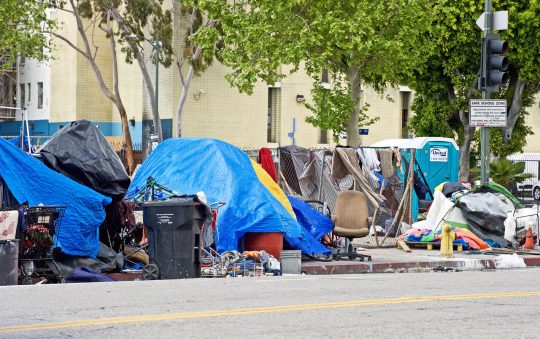
Over 36,000 Black Californians maintained coverage with a health insurance provider through the 14-month Medi-Cal to Covered California redetermination process led by the California Department of Health Care Services (DHCS) and Covered California.
This number does not include Californians who have employer or private insurance or those who have been enrolled in Medi-Cal or Covered California and have met all the eligibility requirements for both programs.
In total, more than 158,000 Californians retained their health coverage through the statewide redetermination initiative, which began in April 2023 and ran until June of this year, according to DHCS.
Covered California Chief Medical Officer and Chief Deputy Executive Director Dr. S. Monica Soni said the availability of affordable health coverage can help prevent negative medical outcomes in the Golden State’s Black communities. That coverage includes Medi-Cal, California’s version of the Medicaid program — which offers free or low-cost health care access to low-income people across the nation — or one of the affordable health plans offered through Covered California, the state’s health insurance exchange
Related Stories:
“We know primary care is one of the ways to have good health and wellness — from behavioral health to physical health to instances where someone has a substance abuse disorder,” said Soni, also a primary care doctor and the first Black Chief Medical Officer at Covered California.
“Our communities are some of the most incredible community-oriented, health-seeking ambitious folks,” Soni continued. “We have a lot of assets in our communities, but it is true we have higher rates of death for many cancers. We have more obesity. We have really higher rates of diabetes and high blood pressure as well.”
The redetermination project kicked off when Medi-Cal resumed its renewal process to establish eligibility for over 15 million of its members following the end of the federal continuous coverage requirement put in place during the COVID-19 pandemic.
Covered California automatically enrolled individuals in one of its low-cost health plans with insurers such as Aetna Health, Anthem Blue Cross of California, Health Net, Molina Health Plan, or Valley Health Plan if they lost Medi-Cal coverage and qualified for Covered California.
Covered California Executive Director Jessica Altman said people who received health insurance through Covered California didn’t experience a gap in coverage.
“We are proud of these results so far, and the Medi-Cal to Covered California program is now a mainstay in our effort to keep Californians covered with comprehensive, affordable health insurance,” she said in a statement.
Soni said continuing the automatic enrollment beyond the redetermination process helped to keep health insurance accessible for state residents.
According to a survey conducted last fall on behalf of Covered California by NORC and Slosar Research, 82% of people in the Medi-Cal renewal processes were covered through employer- insurance; were already enrolled with Covered California, or returned to Medi-Cal.
Soni stated that the main obstacle that prevents people without health insurance from selecting a plan through Covered California is a belief the price will be out of their budget.
“Sometimes people are worried about the cost,” she explained. “We have zero-dollar and $10-a-month plans, depending on household income. Regardless of what health plan you choose all of your primary care costs are the same. We believe you should be able to shop for the health plan you want.”
Covered California’s open enrollment period runs from November of this year to January 2025. Soni said Covered California will have record levels of support and affordability during the upcoming year.
“Incredible support we are getting from the state and federal government makes us able to do that,” she said.
Everyone should use their health coverage to see a doctor as required, based on their individual or family medical history, Soni said, recalling her experience working at a Los Angeles area hospital.
“I’ve had many circumstances where someone wasn’t going to see a primary care provider and showed up in the emergency room with an advanced cancer that could have been caught early and treated, but now it is too far advanced to really get treatment,” she recalled. “That is a 40-year-old, that is a young person, who again with earlier care, all of that could have been prevented.”







